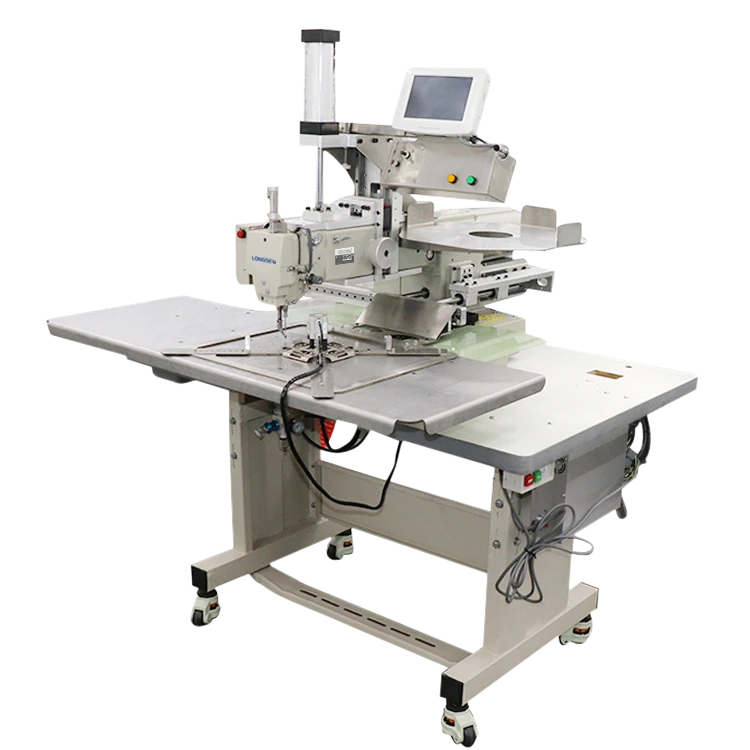machine for leather sewing
The Evolution and Importance of Machines for Leather Sewing
Leather has been a cherished material throughout human history, valued for its durability, versatility, and aesthetic appeal. As demand for leather goods surged, from fashion accessories to industrial applications, the need for efficient leather sewing techniques became paramount. This article delves into the evolution and significance of machines for leather sewing, highlighting their impact on craftsmanship, productivity, and the leather industry as a whole.
Historical Context
The use of leather dates back thousands of years, with primitive methods involving hand-stitching using rudimentary tools. As civilization progressed, so did sewing techniques. Early seamstresses often relied on manual stitching with needles made from bone or metal. However, the advent of the Industrial Revolution in the 18th century marked a turning point, leading to innovations that would transform leather crafting.
In the 19th century, the invention of the sewing machine revolutionized the textile industry, and soon, specialized machines for leather sewing emerged. These machines allowed artisans to produce leather goods with increased speed and consistency, laying the foundation for mass production. Among the notable inventions was the post bed sewing machine, designed specifically for the thickness and density of leather, accommodating its unique characteristics.
Types of Leather Sewing Machines
Leather sewing machines come in various types, each catering to specific requirements and applications
1. Walking Foot Sewing Machines These machines use a walking foot mechanism that grips the leather from the top as well as the bottom. This feature ensures even feeding of multiple layers of leather, preventing slippage and puckering, which is common with thicker materials.
2. Post Bed Sewing Machines Ideal for intricate projects, these machines have a high post that allows for easy maneuverability of materials. Craftsmen can easily sew around corners and create detailed designs, making them popular among leather artisans.
3. Flat Bed Sewing Machines This type resembles conventional sewing machines but is adapted for leather. While they are versatile, they may struggle with thick layers unless equipped with specific attachments.
machine for leather sewing

4. Cylindrical Sewing Machines Designed for sewing cylindrical objects, these machines are commonly used for creating items like bags and shoes. Their unique shape allows the operator to work seamlessly around rounded surfaces.
5. Heavy-Duty Sewing Machines Built to handle the toughest materials, these machines can stitch through multiple layers of heavy leather, making them essential for industrial applications.
The Impact of Leather Sewing Machines
The introduction of sewing machines for leather significantly elevated productivity in the leather industry. With manual labor, a skilled artisan could sew only a limited number of products per day. In contrast, machines allow a single operator to produce dozens, if not hundreds, of items daily. This shift not only reduced labor costs but also enhanced the overall quality of leather goods.
Moreover, leather sewing machines have empowered artisans to experiment with design, pushing the boundaries of creativity. The precision offered by these machines allows for intricate patterns, unique stitch types, and faster production cycles, fostering innovation in leather craftsmanship. From custom handbags to bespoke shoes, the potential for unique, high-quality products has expanded tremendously.
Challenges and Considerations
Despite the advantages, the reliance on machines also brings challenges. The initial investment in high-quality leather sewing machines can be significant, particularly for small artisans or businesses. Additionally, while machines enhance productivity, they can also lead to a loss of traditional craftsmanship skills, as fewer artisans rely solely on hand-stitching techniques.
Furthermore, maintaining and repairing sewing machines requires specialized knowledge, which may not be readily available in all regions. Thus, while technology enhances production, it necessitates a balance between machine use and the preservation of traditional skills.
Conclusion
In conclusion, machines for leather sewing have played a transformative role in the leather industry. They have increased efficiency, enhanced creativity, and allowed for the mass production of goods that were once the sole domain of skilled artisans. As technology continues to evolve, the challenge lies in integrating modern techniques while preserving the artistry and craftsmanship that define leather goods. The future of leather sewing will undoubtedly involve a harmonious blend of innovation and tradition, ensuring that leather remains a timeless material appreciated for its beauty and durability.
-
Industrial Cylinder Arm Sewing Machine: Revolutionizing Heavy-Duty SewingNewsJul.28,2025
-
Cylinder Arm Sewing Machine: Perfect for Special Sewing ApplicationsNewsJul.28,2025
-
Cylinder Bed Sewing Machine: Essential for Sewing Complex MaterialsNewsJul.28,2025
-
Heavy Duty Sewing Machine: The Essential Tool for Industrial ApplicationsNewsJul.28,2025
-
Computerized Pattern Sewing Machine: Revolutionizing Precision StitchingNewsJul.28,2025
-
Heavy Duty Industrial Sewing Machine: Power Meets PrecisionNewsJul.28,2025
-
Leather Sewing Machine: The Industrial Standard for Tough MaterialsNewsJul.18,2025





























